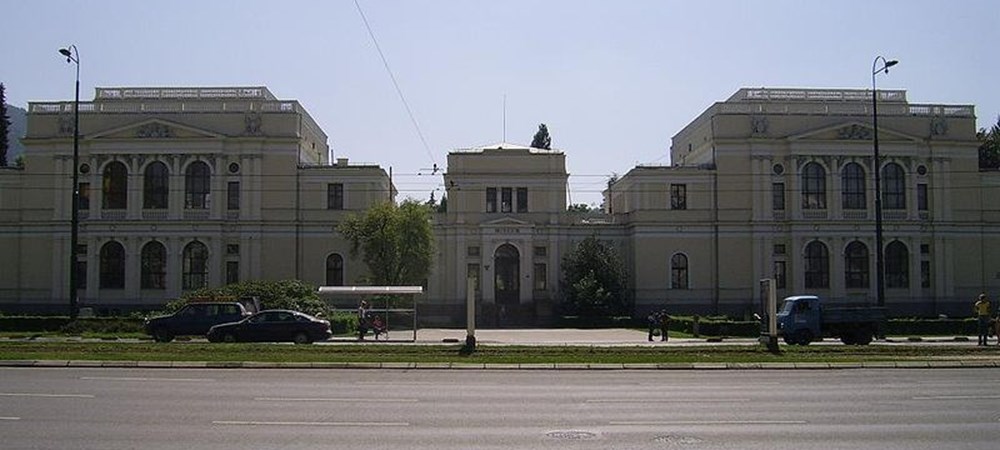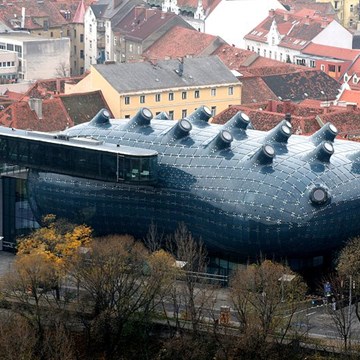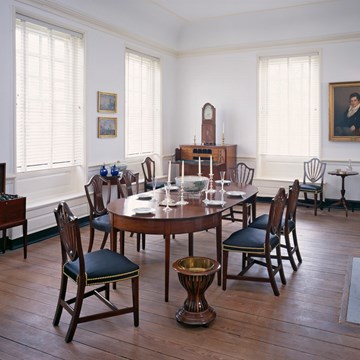National Museum of Bosnia and Herzegovina
Zemaljski muzej Bosne i Hercegovine
The National Museum of Bosnia and Herzegovina was founded in 1888 and is the oldest of the modern cultural and scientific institutions of Western type in Bosnia and Herzegovina. A series of historical events influenced its establishment. A number of individuals and groups had for a long time prior to this emphasized the need for such an institution. The initial idea to establish a museum dates back to 1850. However, nearly four decades were to elapse before its establishment, during which two empires ruled Bosnia and Herzegovina – Ottoman rule gave way in 1878 to Austro-Hungarian administration.
The political, strategic and economic goals set by the Austro-Hungarian administration called for European literacy levels and more widespread education. As one of the still unexplored countries of the Balkans, Bosnia and Herzegovina was a source of curiosity for many scientists, especially those from Austria-Hungary. At the same time, it also attracted the attention of quasi-scientists, which in the very first years of occupation resulted in their removing cultural monuments from the region. This all contributed to the decision to take more concrete measures designed to bring about the long-awaited establishment of a museum. To this end, the Museum Society was formed, followed on 1 February 1888 by the establishment by the Provincial Government of the museum, then a Provincial Museum, now properly known as the National Museum of Bosnia and Herzegovina. Mr. Kosta Hörmann, an adviser to the Government, was appointed as director of the Museum.
The Museum soon outgrew its original, inconvenient premises, and work began on a new building in 1908. It was decided that the new museum facilities would consist of a complex of buildings housing all the existing collections in separate sections. The construction was completed in 1913 and the Museum was open to the public on 4 October that year. The complex, which remained for many years the only purpose-built museum in the former Yugoslavia, still houses the National Museum to this day.
Since the very beginning of its work, the National Museum has developed as a complex cultural and scientific institution fostering a number of scientific and scholarly disciplines, i. e. history, geography, archaeology (prehistoric, ancient and mediaeval), ethnology, history of art and natural history (biology, geology and mineralogy), and to some extent language, literature, statistics and bibliography. Over the years these disciplines have been rationalized into the present three departments: Archaeology, Ethnology and Natural History. Since the outset, considerable attention has been paid to the educational and cultural function of the Museum. Museological activities have also created a basis for the acquisition of all the existing collections through research work in the field, purchase, exchange or gifts to the Museum.
Organizational units:
- Archaeology Department
- Ethnology Department
- Natural History Department
- Library
Text source: http://www.zemaljskimuzej.ba/o_nama/osnivanje_muzeja.php
Foto source: http://commons.wikimedia.org/wiki/File:Sarajevo_museum.jpg
Exhibitions and events
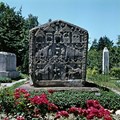
Bosnia and Herzegovina in the Middle Ages
Permanent exhibitionSystematic Collection Archaeological artifacts of mediaeval culture in Bosnia and Herzegovina dating from the 6th to the 15th century. The collection comprises about 11,500 items. Exhibition...
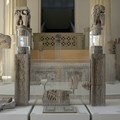
Bosnia and Herzegovina in Ancient History
Permanent exhibitionSystematic Collection Archaeological artifacts of the Roman provincial culture in Bosnia and Herzegovina dating from the 1st to the 6th century CE. Part of the collection belongs to the early...
Educational programs
We don't have anything to show you here.
Collections
We don't have anything to show you here.
